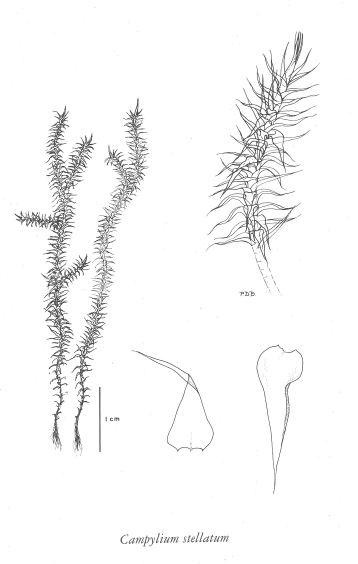E-Flora BC: Electronic Atlas of the Flora of British Columbia
Campylium stellatum var. stellatum (Hedw.) J. Lange & C. Jens
golden star-moss (star campylium moss) Amblystegiaceae Species Account Author: Wilf Schofield Extracted from Some Common Mosses of British Columbia Introduction to the Bryophytes of BC
|
||||||||||||||||||||||||||||||||||
